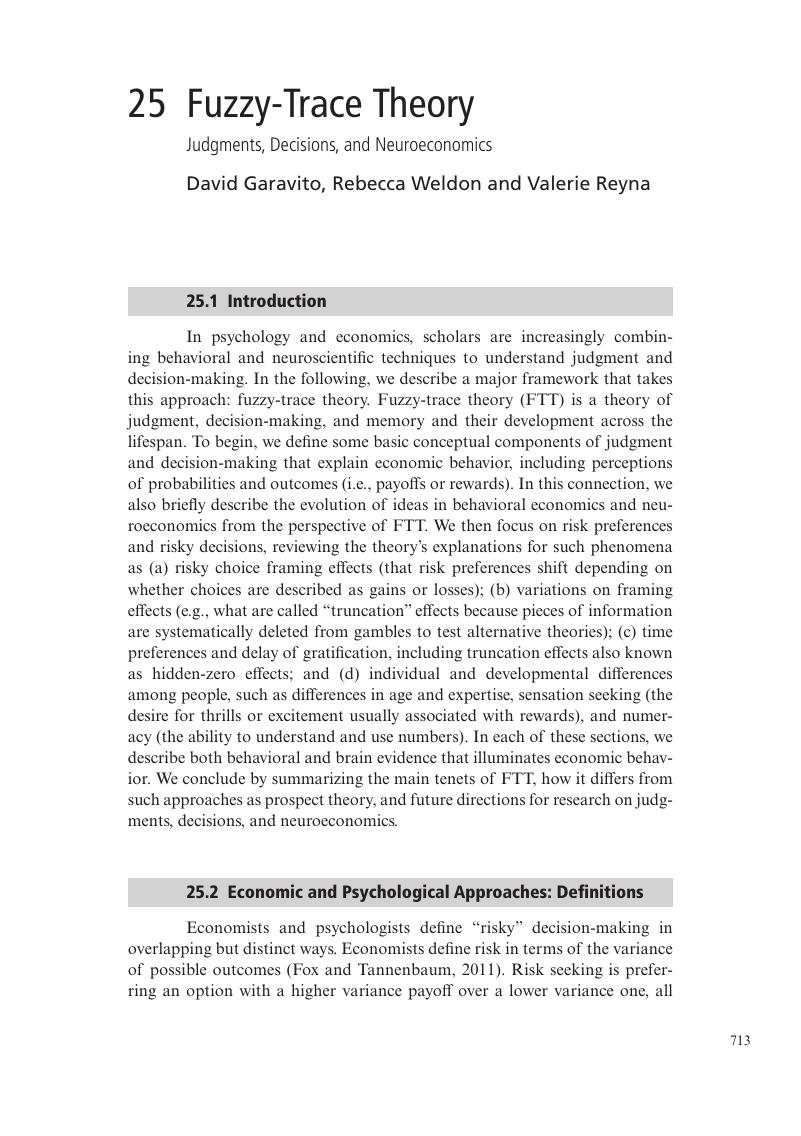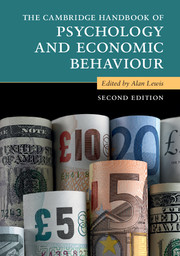Book contents
- The Cambridge Handbook of Psychology and Economic Behaviour
- The Cambridge Handbook of Psychology and Economic Behaviour
- Copyright page
- Dedication
- Contents
- Plates
- Figures
- Tables
- Notes on Contributors
- Introduction
- Part I Theory & Method
- Part II Finance
- Part III Private Sector Consumer Behaviour and the Firm
- Part IV Public Sector Consumer Behaviour
- Part V Environment
- Part VI Biological Perspectives
- Part VII New Horizons
- 24 Motivation and Awards
- 25 Fuzzy-Trace Theory
- 26 Robots, Cyborgs, and Consumption
- 27 End Piece
- Index
- References
25 - Fuzzy-Trace Theory
Judgments, Decisions, and Neuroeconomics
from Part VII - New Horizons
Published online by Cambridge University Press: 01 February 2018
- The Cambridge Handbook of Psychology and Economic Behaviour
- The Cambridge Handbook of Psychology and Economic Behaviour
- Copyright page
- Dedication
- Contents
- Plates
- Figures
- Tables
- Notes on Contributors
- Introduction
- Part I Theory & Method
- Part II Finance
- Part III Private Sector Consumer Behaviour and the Firm
- Part IV Public Sector Consumer Behaviour
- Part V Environment
- Part VI Biological Perspectives
- Part VII New Horizons
- 24 Motivation and Awards
- 25 Fuzzy-Trace Theory
- 26 Robots, Cyborgs, and Consumption
- 27 End Piece
- Index
- References
Summary

Information
- Type
- Chapter
- Information
- The Cambridge Handbook of Psychology and Economic Behaviour , pp. 713 - 740Publisher: Cambridge University PressPrint publication year: 2018
References
25.5 References
Accessibility standard: Unknown
Why this information is here
This section outlines the accessibility features of this content - including support for screen readers, full keyboard navigation and high-contrast display options. This may not be relevant for you.Accessibility Information
- 3
- Cited by
